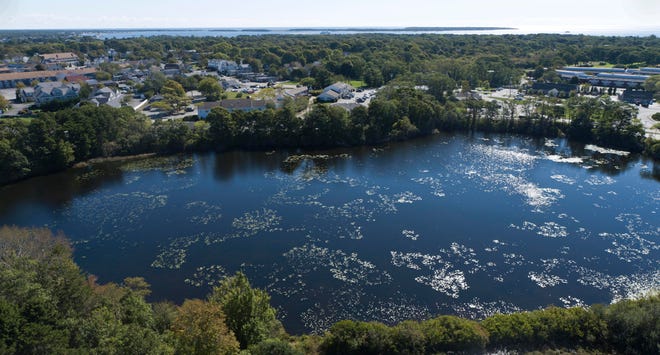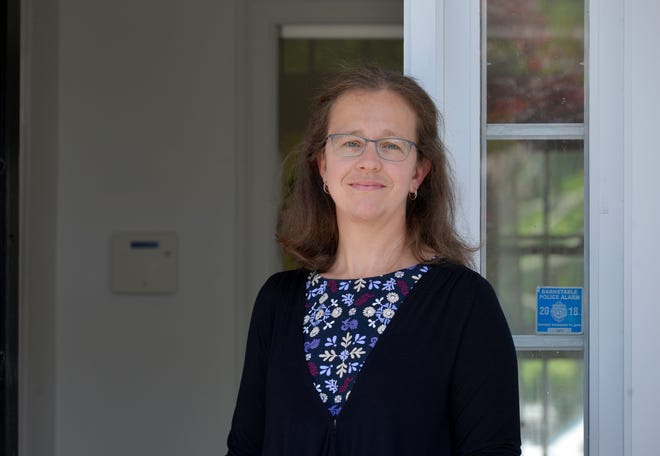State DEP: PFAS chemical contamination at Hyannis airport not investigated enough
Jeannette Hinkle Cape Cod Times
Published Sep 14, 2021
HYANNIS — Cape Cod Gateway Airport officials have failed to adequately investigate the use and spread of PFAS and other chemicals there, according to findings from a Massachusetts Department of Environmental Protection audit of the airport's assessment of hazardous contaminants on site.
The state DEP on Aug. 24 issued a notice of noncompliance to airport manager Katie Servis.
The notice states the airport’s Phase II Comprehensive Site Assessment, which airport staff submitted to DEP on March 12, violated the Massachusetts Contingency Plan. That body of regulations is designed to streamline and accelerate the assessment and cleanup of oil and hazardous materials released into the environment.
Airport staff are now charged with submitting a revised Phase II Report to DEP by Nov. 10. The revised report must incorporate DEP’s comments in the notice of noncompliance.

If the airport doesn’t complete the required actions by Nov. 10, DEP could levy daily administrative penalties.
To obtain full compliance, the notice warned, DEP could also pursue criminal prosecution; civil action including court-imposed civil penalties; or other forms of administrative action.
Airport staff consulted with the DEP after receiving the notice of noncompliance, assistant airport manager Matt Elia said last week, and are in the process of scheduling another meeting to go over the steps the airport needs to take to correct the deficiencies in its site assessment.
“Our goal is to achieve buy-in from DEP to make sure that they are fully on board with how we're going to move forward and that they are comfortable with that,” Elia said.
“We care very much about environmental stewardship,” he added. "In the big picture, the airport cares about that role we play in the community and we've made great strides to ensure the protection of natural resources.”
What did DEP’s audit find?
In the audit, the DEP took particular issue with the airport’s assertion that on-site releases of 1,4-dioxane and PFAS — two hazardous substances linked to health problems, including cancer — did not contribute to contamination of the nearby Maher wellfield. The wellfield is a source of public drinking water for the area.
Related:As Barnstable hunts for new sources of public drinking water, PFAS contamination rears its ugly head
DEP staff identified several gaps in the data provided in the site assessment, as well as problems with calculations that airport consultants used to back the finding that off-site contamination is to blame for the well contamination.
The airport reports “conclusions that the 1,4-dioxane and PFAS compounds in the Maher Wells has not originated from the Airport are not adequately supported at this time,” the notice read.
Among other gaps, the site assessment didn’t fully catalogue the location of past fire training exercises at the airport, during which firefighting foam loaded with PFAS was used. The airport’s assessment also failed to document where the firefighting foam was stored and where hoses and equipment were cleaned before 1996, the audit found.
In addition, the site assessment did not address the full scope of PFAS compounds used at the airport, according to the DEP. PFAS, or per- and polyfluoroalkyl substances, are a group of thousands of human-made chemicals, six of which are currently regulated by the state.
An unexplained lack of testing for 1,4-dioxane both on and near airport grounds was also flagged by DEP staff.
What’s next?
The airport is currently gathering the additional information the DEP requested in the notice of non-compliance, Elia said.
“We jumped right on this to make sure that we can document and gather the necessary data to show why we believe in the science we put in there and to add information and further document their areas of concern,” he said.
As part of that effort, Elia said, airport consultants and staff will pull together information left out of the site assessment to better explain why the airport stands by its claim that contamination from the airport hasn’t reached the Maher wellfield.
“This is a very complex site,” Elia said. “There are other locations and other sources that are impacting the area here.”
Who pays rising costs
The town-owned airport is less than a mile away from the county-owned Barnstable County Fire Rescue and Training Academy, where decades of use of PFAS-laden firefighting foam resulted in severe groundwater contamination that is still being studied.
Town officials recently criticized the county’s draft plan for assessing the scope of PFAS contamination at the fire-training academy as inadequate, and urged the county to extend its sampling effort to the Maher wells.
'A hodgepodge': Draft PFAS assessment plan for Barnstable fire academy plume is inadequate
Costs associated with PFAS contamination are rising fast for local governments.
The town of Barnstable has spent upwards of $22 million to address PFAS contamination. The airport, which uses a separate operating budget, has spent $1.29 million on the problem. And the county is now compiling its own PFAS-related expenses.
Public and private entities are within their rights to search for other parties that could share the liability for contamination costs, said Andrew Gottlieb, executive director of the Association to Preserve Cape Cod.
But the search for other potentially responsible parties shouldn’t delay comprehensive efforts to identify and clean up contamination, he said.
“Ultimately, the longer you wait to do something, the more it costs,” Gottlieb said. “In this instance, we've got a couple of public entities squabbling over assigning responsibility to one another. At the end of the day, it will be the same people who have to reach into their pockets to finance the solution.”
Betsy Young, president of the Greater Hyannis Civic Association, said residents will be closely monitoring both the town’s and the county’s PFAS assessment and cleanup efforts in the village.
“If the town and the county can’t work through a reasonable plan for us, it is the citizens of Hyannis, really, that are going to suffer here,” Young said. “There is going to have to be a giant amount of money thrown at this problem.”
Attorney Robert Bilott — who played a pivotal role in proving the companies that manufactured and sold products containing PFAS, including firefighting foam, hid the chemicals’ dangers for decades — recently told Massachusetts lawmakers that taxpayers shouldn’t shoulder the burden of cleaning up PFAS contamination at all.
“These fire departments, these airports, the state of Massachusetts — none of the taxpayers here should have to pay this,” he said. “We know who the responsible parties are. They should be paying for it.”
Attempts to reach officials from the Airport Commission, which oversees the airport, were unsuccessful.



